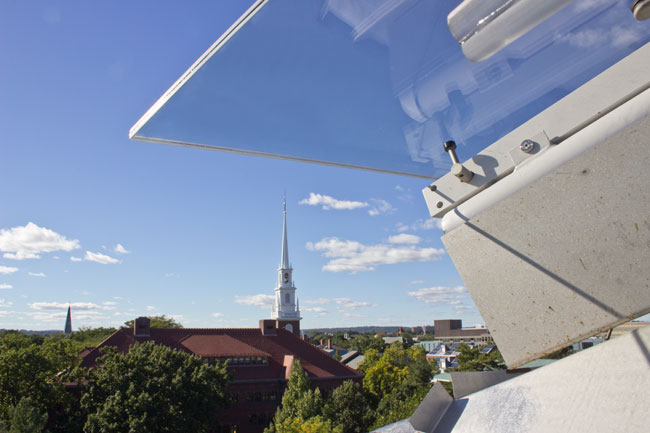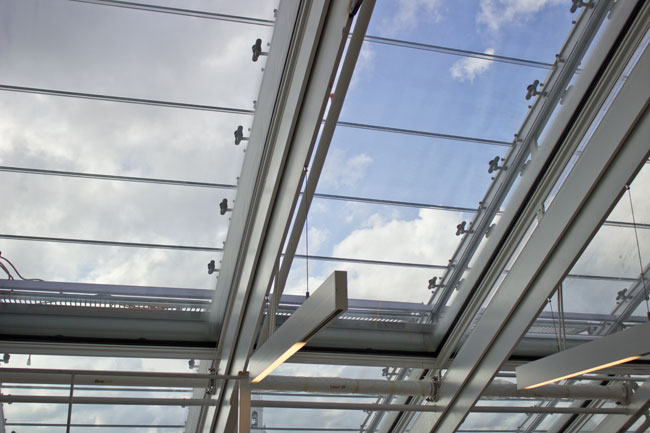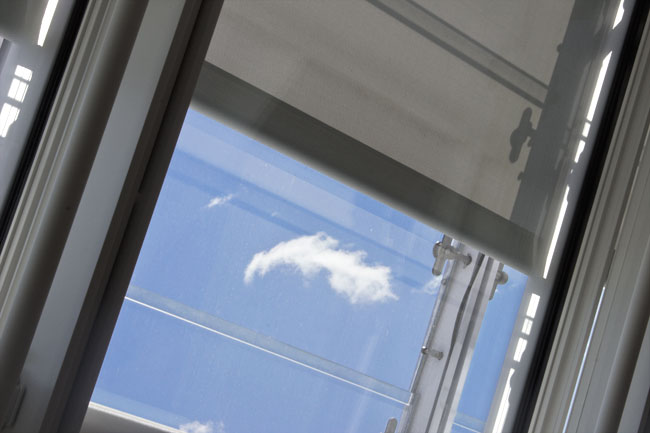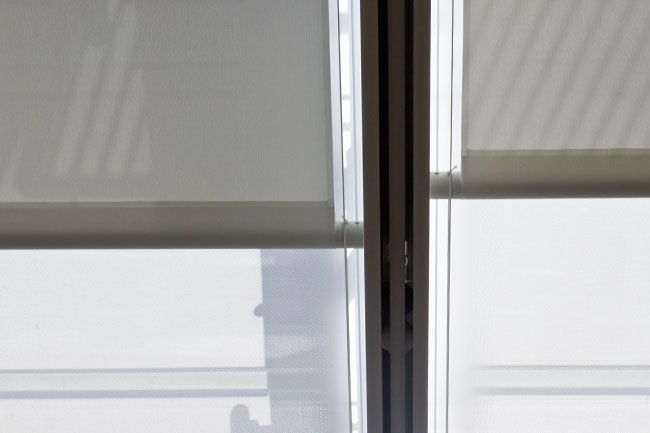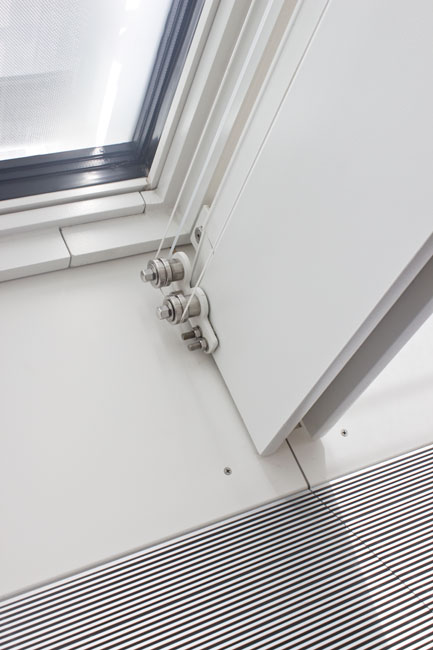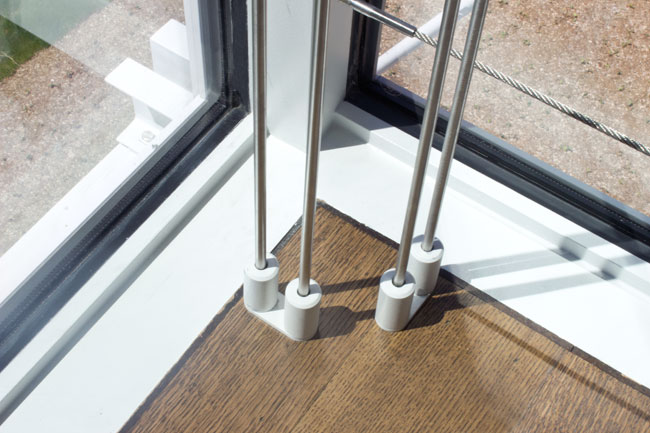When you’re standing in the Harvard Art Museums’ Calderwood Courtyard, it’s hard to resist looking skyward at the striking glass roof. And given the gorgeous light that showers down, it’s easy to understand why architect Renzo Piano calls this core space the “Light Machine.” But how does the Light Machine work? How do you manage so much natural light—especially in a building that’s filled with works of art, many of which are light sensitive?
The Light Machine’s key ingredient is the museums’ complex glass-and-steel roofing system, which allows controlled natural light to stream into the facility. The roof’s 320 triple-insulated glass panels contain filtration material that keeps ultraviolet rays from entering the museums. Although the glass roof may appear delicate, it’s anything but: braced with giant steel rafters, clips, and supports, the roofing system has undergone seismic testing and is engineered to perform in the event of an earthquake.
The roof is fitted with exterior and interior shades, with the exception of the area directly above the courtyard, which has only the exterior set. The outer shades—protected from the elements by 1,800 glass louvers—hold back the heat of infrared light. Interior shades provide further light control to protect works of art from receiving direct sunlight. In total, more than 500 shades have been installed throughout the museums.
On November 16, you’ll be able to see the Light Machine in action when the museums open to the public. And while there are a number of complex roofing and shading systems working hard to balance light levels in our historic facility, the effect will appear effortless.
